Janneke van de Loo
A weakly supervised sequence tagging and grammar induction approach to semantic frame slot filling
Jun 15, 2019
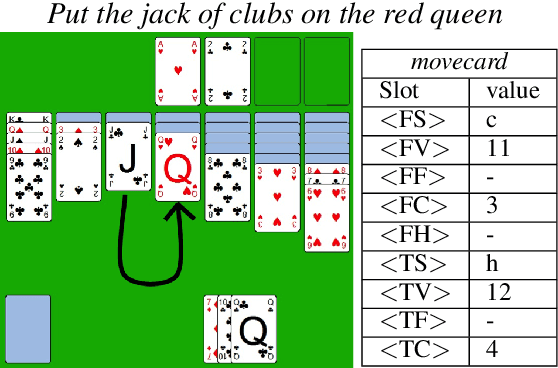
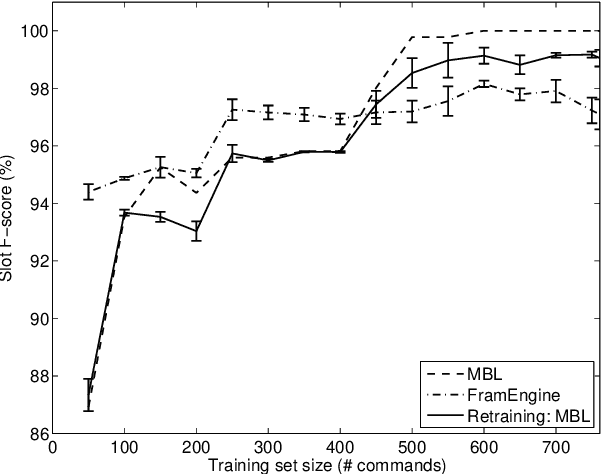

Abstract:This paper describes continuing work on semantic frame slot filling for a command and control task using a weakly-supervised approach. We investigate the advantages of using retraining techniques that take the output of a hierarchical hidden markov model as input to two inductive approaches: (1) discriminative sequence labelers based on conditional random fields and memory-based learning and (2) probabilistic context-free grammar induction. Experimental results show that this setup can significantly improve F-scores without the need for additional information sources. Furthermore, qualitative analysis shows that the weakly supervised technique is able to automatically induce an easily interpretable and syntactically appropriate grammar for the domain and task at hand.
Effective weakly supervised semantic frame induction using expression sharing in hierarchical hidden Markov models
Jan 30, 2019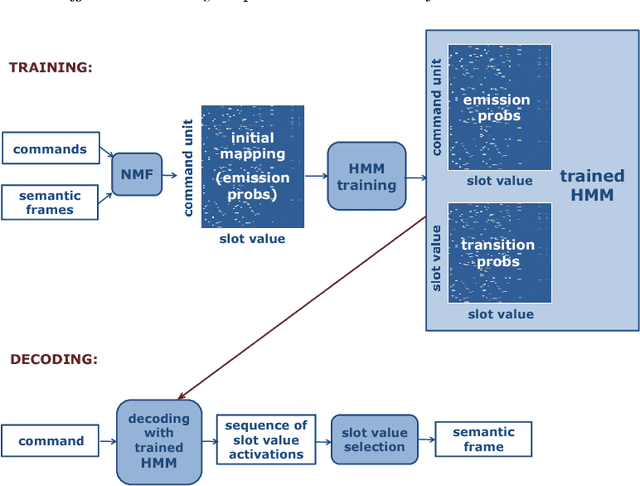
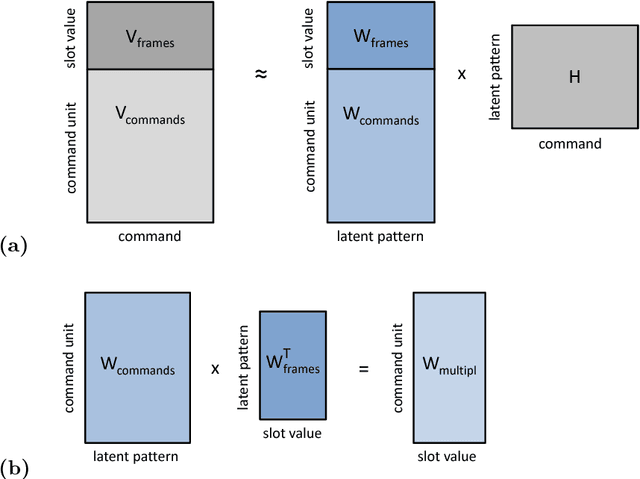
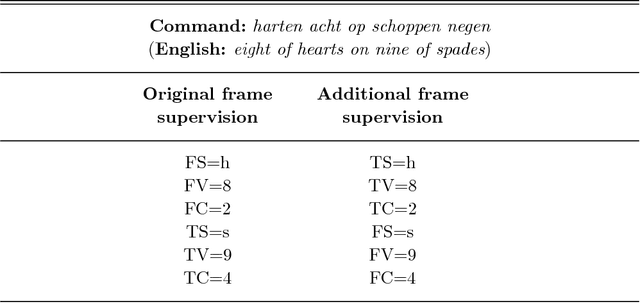
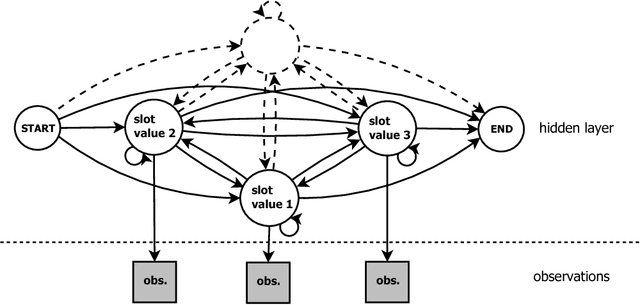
Abstract:We present a framework for the induction of semantic frames from utterances in the context of an adaptive command-and-control interface. The system is trained on an individual user's utterances and the corresponding semantic frames representing controls. During training, no prior information on the alignment between utterance segments and frame slots and values is available. In addition, semantic frames in the training data can contain information that is not expressed in the utterances. To tackle this weakly supervised classification task, we propose a framework based on Hidden Markov Models (HMMs). Structural modifications, resulting in a hierarchical HMM, and an extension called expression sharing are introduced to minimize the amount of training time and effort required for the user. The dataset used for the present study is PATCOR, which contains commands uttered in the context of a vocally guided card game, Patience. Experiments were carried out on orthographic and phonetic transcriptions of commands, segmented on different levels of n-gram granularity. The experimental results show positive effects of all the studied system extensions, with some effect differences between the different input representations. Moreover, evaluation experiments on held-out data with the optimal system configuration show that the extended system is able to achieve high accuracies with relatively small amounts of training data.
 Add to Chrome
Add to Chrome Add to Firefox
Add to Firefox Add to Edge
Add to Edge